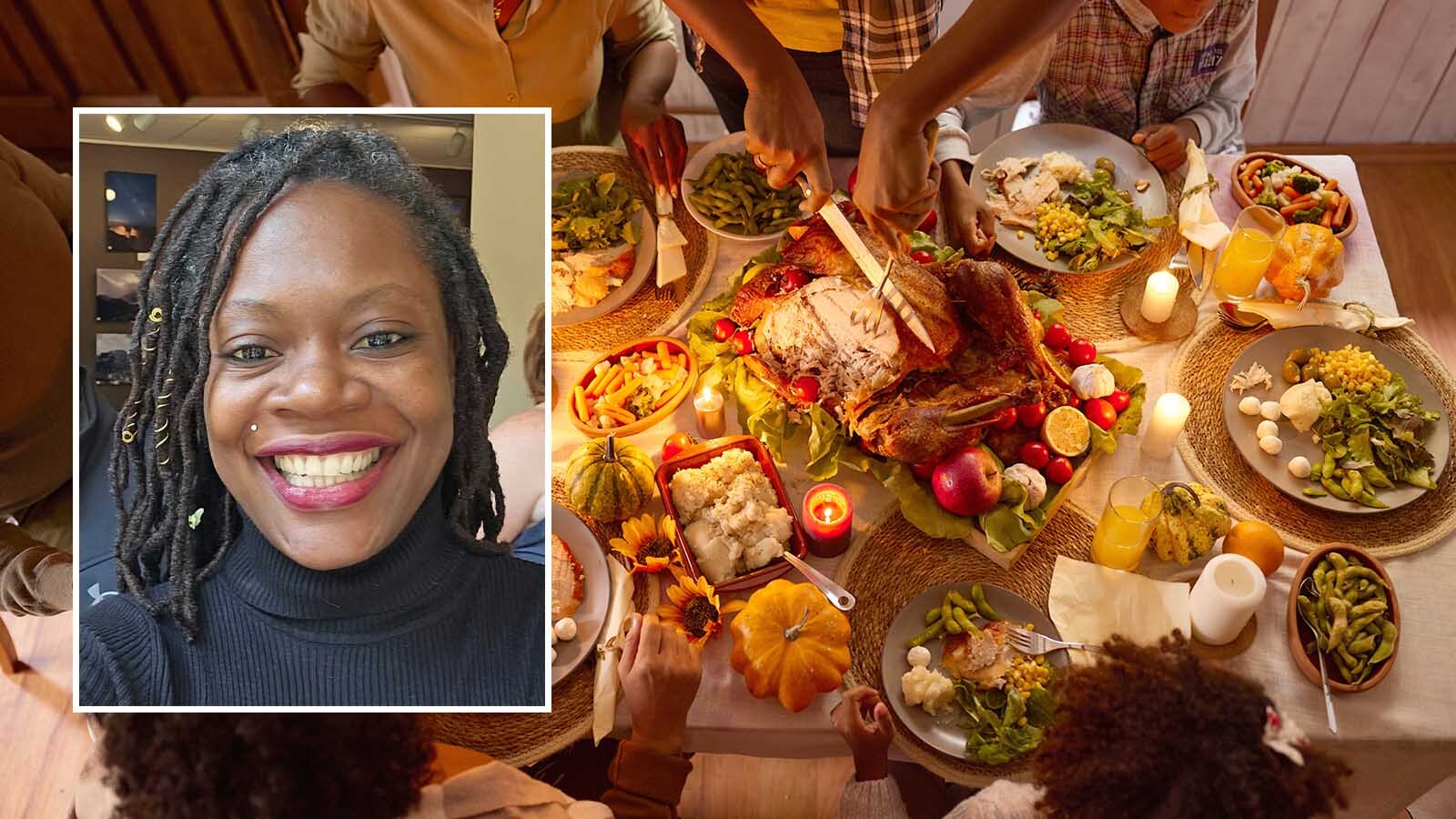Chances are, many people will at least take a look at what AI recommends for roasting a nice turkey this holiday season, whether it’s for Thanksgiving or Christmas.
The advantage of an AI-generated recipe, at least in theory, is that AI can draw on a vast reservoir of online information when it comes to roasting a big, beautiful turkey for a special occasion. Ideally, that would bring together all the most useful wisdom in one souped-up, master chef-like recipe that would help home cooks achieve next-level results.
Unfortunately, what actually happens and what is ideal are often two different things. And that’s the case with AI’s instructions for roasting a special Thanksgiving Day turkey. The exercise produced an almost-correct, just-OK method.
Experienced home cooks will likely navigate the almost right parts just fine and quickly recognize where AI has gone astray. But less experienced chefs who don’t realize where AI is glossing over things or just not quite right can run into trouble.
The method AI generates for Cowboy State Daily also didn’t make much use of the more advanced techniques most chefs would use to really take things up a notch, and the instructions also glossed over points that can make or break a turkey dinner.
“It provides the proper ways to thaw the turkey and the proper time in the days before,” Chef Petrina Peart of Cheyenne told Cowboy State Daily. “But it seems like the brining is skipped and it goes straight to seasoning.”
Peart is known for her celebrity television appearances and cooking on shows like “Defeat Bobby Flay” and Martha Stewart’s “Yes, Chef!”
For her, brining is not a step to be overlooked and mentioned in passing as a possible option.
Brining is fundamental. This way, she creates an unforgettable turkey every time she cooks for a special occasion.
Typically, Peart prefers a wet brine for turkey, and that’s something she would do once her bird is thawed. But it can also be done while the bird is thawing, she added, if time is pressing.
To make it super easy and with as little hassle as possible, she gets a so-called brine bag. This is simply a large plastic bag big enough to wrap the bird in. The brine solution and the bird are added to the bag, sealed securely, and the bird then goes into the refrigerator until it’s time to roast.
“The brine would consist of water, a little vinegar, some aromatics like oranges and fresh herbs,” Peart said. “You could put lemon, onion, garlic and fresh herbs like rosemary, sage, thyme – the stronger aromatics.”
Brining helps break down the proteins in the turkey, making it easier for the meat to absorb both moisture and flavors.
“That’s something the AI missed, which I think is a good step to add,” Peart said. “I don’t think you can necessarily skip this, and it’s just so easy to do.”
Dry brining vs. Wet brining
Brining is also a must cookbook author and chefPiper Fenimore, but she prefers dry brine to wet, partly because of Wyoming’s altitude and partly because she likes crispy skin on her turkey. Because dry brining doesn’t add moisture to a bird, it makes it a little easier to get crispy skin, rather than submerging the bird in liquid brine and patting it dry before roasting.
Immersing a bird in liquid also comes with its own logistics, which can sometimes mean taking up more space in an already overcrowded refrigerator. Dry brining is slightly less finicky in some ways, and may suit a busy home cook who is already juggling a lot of things.
“The dry brine just seems to work a little better,” said Fenimore, who also works in advertising for Cowboy State Daily. “And I would add aromatics to the cavity. Just make sure you get all the ice out. A lot of people forget to do that, but they do dry it out and salt and pepper it.”
Fenimore also found the AI recipe to be “pretty good” in most respects.
“At least it doesn’t say you have to thaw the turkey in the back of your truck,” she said, chuckling a bit. “That’s what a lot of people do here.”
The outside temperature can fluctuate too much to do that safely, Fenimore said. And this year’s unusually warm temperatures in November are a good example of that.
“The refrigerator is 40 degrees or lower to keep everything at the right temperature,” she said. “So that part is correct. And defrosting the refrigerator is my preference. It’s slow and easy and keeps it at the right temperature.”
How to thaw a bird faster – safely
But defrosting the refrigerator takes up a lot of space in a refrigerator, while many other things need to be cooled. It also lasts three or four days, so requires a bit of advance planning that is beyond many work-loaded Americans.
If someone has to buy their bird the night before Thanksgiving to cook the next day, they will have to go the extra mile to thaw it in time.
“You can cook it frozen,” Fenimore added. “It’s just going to take longer. It’s going to take 50% more time.”
Thawing also allows the bird to cook more evenly, so both Fenimore and Peart recommend it.
To speed up the thawing process, a turkey can be kept in a cold water bath, with the water changed every 30 minutes.
“It’s actually most ideal if you can hold the turkey in a water bath, with a trickle of running water,” Piper said. “That speeds up the defrosting process and that’s what we do in the industry. You can defrost it as quickly as possible: 30, 45 minutes or an hour at most with a constant drip, because it keeps the water moving.”
But most home cooks won’t have such an ideal setup, Fenimore added, making quickly thawing a turkey more difficult to do safely at home.

What to do with butter
One of the other areas where both chefs differed with AI was what to do with butter. AI wanted to spread compound herb butter both under and on top of the skin before roasting, after patting the bird’s skin dry.
Although both chefs agreed to pat the bird dry, butter also contains moisture, so it may not be the best choice if crispy skin is desired. Chefs who want to use butter on the skin might consider using half butter, half oil, Peart suggested.
“It will add flavor, but compared to oil it doesn’t have a high smoke point,” Peart said. “You can use half melted butter, half avocado oil or olive oil to create a flavorful mix (for) a turkey with crispy skin.”
Under the skin, Fenimore said she would prefer to use something like olive oil-based mayonnaise instead of butter.
“I know it sounds weird, but it will keep it more moist,” she said. “And that’s just a matter of height.”
However, both chefs would still use butter for the bird. Instead, they simply melted the compound herb butter and placed it in an injector. They then shot the bird with delicious butter all over its body, thighs, breast and legs.
“That would be great,” Fenimore said. “Garlic, salt, pepper and spices – I would melt it, put it in the injector and inject the bird with the whole thing.”
Fenimore said she would recommend preheating the oven to 425 degrees to get things going, then lowering the temperature to 325 degrees. The oven door steals a lot of heat as soon as it’s opened, Fenimore explains. Starting at 425 helps with that problem.
Hands off the bird!
One of the key points that the AI instructions glossed over is the fact that breast meat and thigh meat do not cook to the same degree in a whole bird.
Chefs have come up with different ways to deal with this, such as tying the legs to keep them very close to the turkey’s body, or stretching the turkey so that it cooks more evenly. AI made no mention of the spatchcocking option, which splits the turkey so it can lie flat. There was mention of tying the legs, but without an explanation as to why that is actually important.
AI also didn’t really explain why the bird needs to rest for 30 minutes after cooking before even one slice is made. This is also a crucial step that can make or break you.
Failure to wait the required amount of time will result in drier meat. When meat cooks, the proteins contract and squeeze out the juices. The rest period gives those muscles time to relax. They can then draw moisture back into the meat.
“At high altitudes, it will take a little longer for those juices to soak back into the meat,” Fenimore said. “It’s just that everything works a little slower at altitude.”
Fenimore added that she personally wouldn’t cook a turkey all the way to 165, as recommended in the AI method. Instead, she would pull the bird out when it reaches 160 degrees Celsius, because during the resting phase the temperature in the bird’s core continues to rise.
“By the time you’ve let it rest for 30 to 45 minutes, you’ve now raised the temperature another five to 10 degrees, because of residual cooking,” Fenimore said.
However, keeping guests entertained while the immediately attractive turkey rests is an art form in itself. People see the turkey come out and the immediate impulse is to quickly grab a piece of it to taste.
Peart said she hides her turkey under an aluminum foil tent while it rests, then distracts attention with attractively presented appetizers.
“That’s where devil eggs come in,” she said. “Or add bacon-wrapped dates to keep them busy while you work on the good stuff.”
Renee Jean can be reached at [email protected].








